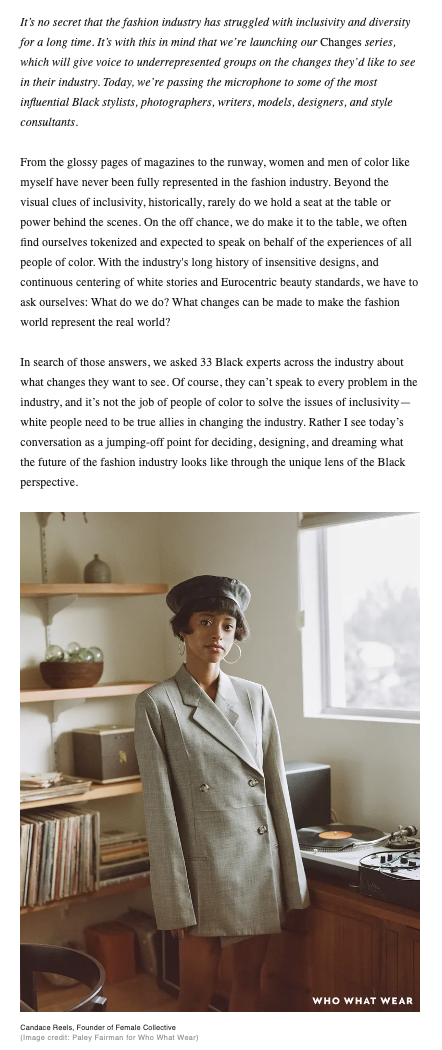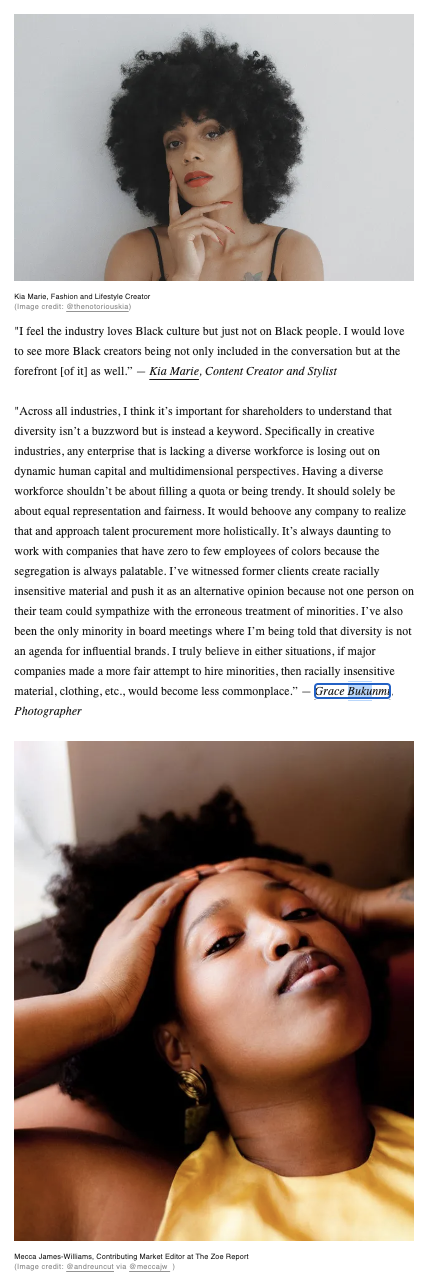


WHO WHAT WEAR SNIPPET
It’s no secret that the fashion industry has struggled with inclusivity and diversity for a long time. It’s with this in mind that Who What Wear launched their Changes series, which will give voice to underrepresented groups on the changes they’d like to see in their industry. To achieve such, they passed the mic to 33 creative powerhouses ranging from influential Black stylists, photographers, writers, models, designers to style consultants:
From the glossy pages of magazines to the runway, women and men of color like myself have never been fully represented in the fashion industry. Beyond the visual clues of inclusivity, historically, rarely do we hold a seat at the table or power behind the scenes. On the off chance, we do make it to the table, we often find ourselves tokenized and expected to speak on behalf of the experiences of all people of color. With the industry’s long history of insensitive designs, and continuous centering of white stories and Eurocentric beauty standards, we have to ask ourselves: What do we do? What changes can be made to make the fashion world represent the real world?
Read my thoughts on the diversification of the fashion industry below and others here.
“Across all industries, I think it’s important for shareholders to understand that diversity isn’t a buzzword but is instead a keyword. Specifically in creative industries, any enterprise that is lacking a diverse workforce is losing out on dynamic human capital and multidimensional perspectives. Having a diverse workforce shouldn’t be about filling a quota or being trendy. It should solely be about equal representation and fairness. It would behoove any company to realize that and approach talent procurement more holistically. It’s always daunting to work with companies that have zero to few employees of colors because the segregation is always palatable. I’ve witnessed former clients create racially insensitive material and push it as an alternative opinion because not one person on their team could sympathize with the erroneous treatment of minorities. I’ve also been the only minority in board meetings where I’m being told that diversity is not an agenda for influential brands. I truly believe in either situations, if major companies made a more fair attempt to hire minorities, then racially insensitive material, clothing, etc., would become less commonplace.” — Grace Bukunmi, Photographer